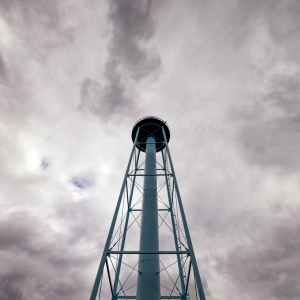This week’s episode of What’s Up With Water covers heatwaves in India, dam removal across Europe, and a groundwater conservation proposal in Arizona.
Transcript
Welcome to “What’s Up With Water” – your need-to-know news of the world’s water from Circle of Blue. I’m Eileen Wray-McCann.
In India, grueling pre-monsoon heat continues to wreak havoc, pushing air temperatures above 110 degrees Fahrenheit. Water shortages are adding to the stress. The Yamuna River provides water to millions of people in the capital region, but is drying up, according to the Indian Express. As India suffers the harsh weather, officials in Delhi say that a neighboring state is not releasing enough water into the river. Because of low water levels, three large water treatment plants are now operating at reduced capacity. As a result, the Delhi water authority told residents in the capital region to store water and prepare for shortages.
In Europe, environmental advocates cheered progress in restoring the continent’s waterways. Last year, at least 239 dams were dismantled in 17 countries, setting a new annual record for dam removals in Europe. The tally comes from a report by a coalition of environmental groups calling themselves Dam Removal Europe. The groups include The Nature Conservancy, Rewilding Europe, and the World Fish Migration Foundation. Old dams not only block fish habitat and impair water quality. They are also a threat to public safety if they collapse. Campaigners say the actions in 2021 are just a start. The Guardian reports that many more dams in Europe are in line for removal. There are about one million dams on the continent, and an estimated 150,000 are functionally obsolete and serve no economic purpose.
In the United States, in Southern Arizona, a citizens’ campaign to increase oversight of groundwater extraction has earned enough signatures to be placed on the November ballot, according to the Gila Herald. The focus of concern is the Willcox basin, where an expansion of dairies and irrigated farms has triggered a range of environmental problems. Groundwater levels have declined, the land has cracked and compacted, and household drinking water wells have gone dry. The basin extends across rural Cochise and Graham counties, located in Arizona’s southeast corner. The Cochise County Elections Department said that the citizens’ petition could proceed to the ballot, but the final decision rests with the county Board of Supervisors, which could call for the election at its August meeting. If the board does so, voters will be asked a simple question: do they want to form a groundwater management area for the basin? Arizona already has five groundwater management areas. But all of those are located in urban centers and were established by legislative action. If approved, the Willcox unit would be the first groundwater management area to be spearheaded by citizens.
And that’s “What’s Up With Water” from Circle of Blue, where water speaks. More water news and analysis await you at circleofblue.org. This is Eileen Wray-McCann – thanks for being here.
Eileen Wray-McCann is a writer, director and narrator who co-founded Circle of Blue. During her 13 years at Interlochen Public Radio, a National Public Radio affiliate in Northern Michigan, Eileen produced and hosted regional and national programming. She’s won Telly Awards for her scriptwriting and documentary work, and her work with Circle of Blue follows many years of independent multimedia journalistic projects and a life-long love of the Great Lakes. She holds a BA and MA radio and television from the University of Detroit. Eileen is currently moonlighting as an audio archivist and enjoys traveling through time via sound.





